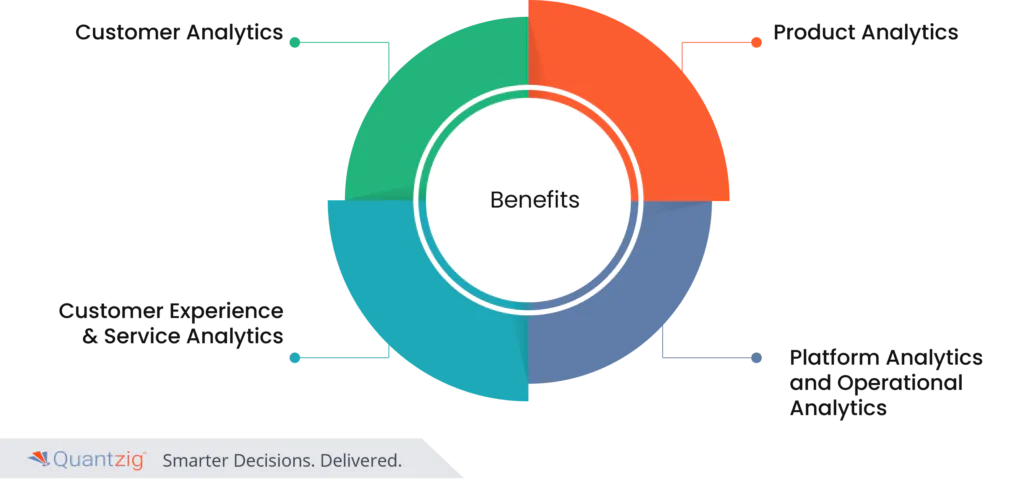Written By: Sudeshna Ghosh
Table of Contents
Introduction
Tech Platform Engineering is emerging as a pivotal discipline in modern software development, accelerating the delivery of applications and amplifying their business value. This approach is gaining traction due to its dedication to enhancing the developer experience and expediting the delivery of customer value by product teams. Platform Engineering is integral to the cloud-native era, where it empowers developers with essential tools and infrastructure, significantly reducing time to market, costs, and augmenting customer satisfaction.
Embracing Platform Engineering solutions translates to a profound transformation in the digital platform engineering services landscape. This involves cultivating an Internal Developer Platform (IDP), providing a consistent environment for developers to build, test, and deploy software with unprecedented efficiency. Automation and streamlining within this standardized environment directly contribute to cost reduction and an improved developer experience.
As recognized by Gartner, the rise of Internal Developer Platforms (IDPs) marks a significant shift in operational interface and application delivery. These platforms serve as a foundation for engineering platforms, enabling product teams to focus on the automation of infrastructure operations and leveraging reusable components.
This introductory journey into Tech Platform Engineering will explore how it shapes our digital reality. From crafting robust APIs for seamless software system communication to orchestrating scalable infrastructure that supports cloud computing, this article will delve into the intricacies of platform engineering. In this realm, where innovation intersects with infrastructure, and the lines between hardware and software blur, we discover how platform engineering is crucial for our interconnected future.
Importance of platform engineering & connected propositions:

In today’s interconnected tech landscape, the importance of platform engineering and connected propositions is undeniable. This holistic strategy requires a seamless fusion of products, services, platforms, content, and operations within a unified connected proposition. Platform engineering serves as the foundation, enabling efficient and effective integration of various elements, thereby enhancing user experience and operational efficiency. It’s a discipline that not only focuses on modern software development but also encompasses the entire spectrum of automated infrastructure operations.
The role of platform engineering in fostering a frictionless developer experience is critical. By opening up technical work to a broader range of knowledge and expertise, including non-expert end users, platform engineering solutions bridge the gap between complex software architectures and generative AI. This approach is essential for large software engineering organizations, where it encourages cooperation between software developers, operators, and other technical roles.
In this dynamic environment, platform engineering transcends traditional IT teams. It responds rapidly to market changes, increasing developer productivity, and reducing development costs. It’s about more than just improving software quality; it’s about increasing agility and reducing risk across distributed development projects. The ideal development platform engineered by platform engineering is characterized by its consistency, efficiency, and the ability to create delivery pipelines that handle low-level infrastructure with ease.
In essence, platform engineering and connected propositions are not just concepts but are imperatives for success in the digital era. They represent the driving forces behind innovation, efficiency, and customer-centricity, shaping the future of business and technology.
Challenges present due to a lack of platform engineering:

The absence of effective platform engineering in tech platforms can lead to significant challenges, particularly in integrating and connecting data from various emerging ecosystems. These ecosystems often present diverse data sources, formats, and Key Performance Indicators (KPIs) that require standardization for meaningful analysis. Overcoming this hurdle is essential for robust data integration solutions, which are pivotal in making informed decisions in a landscape rich in data yet diverse in its presentation.
Another significant challenge is the evolution and adaptation of analytics solutions within tech platforms. In an environment where technology and business needs are constantly changing, analytics solutions must be dynamic and adaptable. They must be agile enough to accommodate new data sources, evolving KPIs, and shifting business priorities. Without this flexibility, analytics solutions risk becoming obsolete, unable to provide the insights necessary for effective decision-making in real-time.
In the realm of platform engineering, challenges such as ensuring security, compliance, and adapting to continuous market changes are common. The role of platform engineering is to provide a structured environment where developer productivity can thrive amidst these challenges. It involves creating a consistent and standardized environment for software development, encompassing aspects like build, test, and deployment automation, while also streamlining the developer experience.
To address these challenges, organizations need to focus on reducing fragmentation, enhancing collaboration with developers, and constructing and maintaining foundational platforms with self-service capabilities. This approach not only reduces friction and increases speed but also ensures a higher level of accuracy in application development initiatives.
By acknowledging and addressing these challenges, organizations can pave the way for a rapidly changing business landscape, fostering innovation and growth. Platform engineering solutions are vital in this context, providing the necessary tools and infrastructure to increase agility, reduce risks, and drive revenue.
Key Benefits of Implementing Platform Engineering:
Platform engineering, an emerging technology approach, accelerates the delivery of applications, significantly impacting business value. This discipline of modern software development encompasses product engineering and internal developer platform (IDP) creation, which includes tools, services, and infrastructure designed for productivity and self-service capabilities. By optimizing the developer experience, platform engineering accelerates the delivery of customer value for product teams, ultimately reducing costs and fostering a culture of innovation and growth.
The implementation of platform engineering brings numerous benefits, especially when integrated within a holistic Revenue Operations framework. It streamlines and synchronizes business operations, breaking down silos and ensuring cohesive operation across departments from marketing to sales to customer support. This unified approach is crucial for consistent customer journeys, seamless data flow, and enhanced customer experiences, fostering loyalty and trust.
Furthermore, platform engineering promotes adaptability in the face of rapidly changing market dynamics. A flexible infrastructure allows businesses to quickly adjust strategies and processes, staying competitive and responsive. Moreover, it offers insights for optimizing resource allocation, making data-driven decisions that increase revenue and profitability.
In the tech-driven landscape, platform engineering underpins successful business operations by promoting efficiency, consistency in customer experiences, adaptability, and informed decision-making. It stands as a cornerstone for achieving sustained business success, leveraging automated infrastructure operations and generative AI to manage the complexity of modern software architectures.
What do our platform engineering solution and connected proposition offer?

Our connected proposition Suite at Quantzig, entrenched in the discipline of platform engineering, focuses on five essential pillars of business operations, serving as a comprehensive command center for all analytics requirements. This suite is a testament to the emerging technology approach in platform engineering, designed to accelerate the delivery of applications and significantly improve business value.
- Customer Analytics: Customer Analytics in digital setups is critical in tracking and understanding each customer’s journey, from the initial interaction to conversion. It employs data and algorithms for real-time delivery of tailored recommendations, offers, or content based on individual customer needs and behavior. This approach, leveraging the power of generative AI and modern software architectures, enhances engagement and conversion rates by offering a highly personalized experience. It epitomizes the essence of platform engineering – using data-driven insights to proactively fulfill customer needs and create rewarding journeys.
- Product Analytics: Our suite extends to product analytics, covering the entire Product Lifecycle Management (PLM) spectrum. It provides decision support with data-driven insights from innovation and concept testing to brand positioning and launch planning. This analytic capability combines “outside-in” and “inside-out” intelligence, integrating market trends with internal data for informed decision-making throughout the product development process.
- Customer Experience & Service Analytics: In customer experience and service analytics, our solutions are designed to fine-tune strategies across various touchpoints, delivering personalized services based on each customer’s context and preferences. This involves analyzing diverse data from customer interactions to optimize the overall experience, fostering customer loyalty in a competitive digital landscape.
- Platform Analytics: Platform optimization in our suite encompasses a holistic approach that includes SEO, technical performance enhancements, user analytics, and rigorous testing. This comprehensive strategy is aimed at securing a significant market share and establishing category dominance across digital platforms. It empowers brands to maximize visibility and customer retention, ensuring competitive performance in the digital arena.
- Operational Analytics: The operational analytics component of our suite provides critical intelligence across the entire supply chain network. It focuses on streamlining data, establishing measurement and alert systems, and implementing execution and optimization solutions using simulation and planning tools. This multifaceted approach boosts decision-making efficiency, ensuring daily operational effectiveness while preparing businesses for future market demands.
Our approach combines managed services with cutting-edge solutions in a distinctive hybrid execution model. This model ensures that clients benefit from robust, off-the-shelf solutions while maintaining the flexibility to customize them as needed. It’s a strategy that not only delivers exceptional products but also the necessary support and adaptability for ongoing success in the rapidly evolving market landscape.

Conclusion:
In today’s dynamic technology and business landscape, the significance of tech platform engineering and connected propositions is paramount. These innovative concepts stand as the bedrock of modern digital innovation, shaping the way information, services, and products flow in our interconnected world.
Platform engineering, an emerging technology approach, is the unseen force orchestrating our digital age. It enables the seamless interaction of diverse software systems, fostering innovation and operational efficiency. This discipline is crucial in creating ecosystems where hardware and software intricacies coalesce, driven by generative AI, modern software architectures, and technical expertise. It’s the bridge that connects APIs, microservices, scalability, and security, facilitating the creation of robust, cloud-native, and agile digital platforms.
Connected propositions represent the capability to adapt and excel in this interconnected environment. By seamlessly weaving together products, services, platforms, content, and operations, businesses can offer comprehensive experiences that resonate deeply with customers. This interconnectedness elevates customer satisfaction, nurtures loyalty, and boosts a brand’s competitive edge in the digital marketplace.
To sum up, platform engineering and connected propositions are not just contemporary concepts but critical imperatives for success in the digital era. They are the driving forces behind continuous innovation, operational efficiency, and customer-centricity. Embracing these principles is essential for businesses that aspire to thrive in our interconnected, technology-driven world.
In conclusion, the journey of understanding tech platform engineering and its connected propositions reveals a landscape where technology and strategy converge. It’s a realm where businesses can harness the full potential of digital transformation, ensuring their place at the forefront of technological advancement and market leadership. As we embrace these cutting-edge approaches, we open doors to a future where innovation, efficiency, and customer engagement are not just goals but realities of the digital business world.
FAQs
- What is Tech Platform Engineering? Tech Platform Engineering is a modern software development discipline that accelerates application delivery and enhances business value. It focuses on improving developer productivity through self-service capabilities and automated infrastructure operations.
- Why is Platform Engineering important in today’s tech landscape? In today’s rapidly evolving tech landscape, Platform Engineering is crucial for optimizing developer experience, facilitating the quick delivery of customer value, and ensuring efficient, automated operations. It allows for the seamless integration of complex software architectures and generative AI, catering to both technical roles and non-expert end users.
- How does Platform Engineering impact business operations? Platform Engineering streamlines and synchronizes business operations across various departments. It enhances operational efficiency, ensures consistent customer experiences, promotes adaptability, and enables data-driven decision-making, which are essential for sustained business success.
- What challenges can arise without effective Platform Engineering? Without effective Platform Engineering, businesses may struggle with integrating and connecting data from diverse sources, leading to standardization challenges. Additionally, they may face difficulties in adapting to fast-changing market demands and maintaining agile analytics solutions.
- What are the key benefits of implementing Platform Engineering? Key benefits include increased agility, reduced development costs, improved software quality, enhanced developer productivity, and the ability to respond swiftly to market changes. It also aids in reducing operational risks and achieving software development goals efficiently.
- How does Tech Platform Engineering align with connected propositions? Tech Platform Engineering aligns with connected propositions by facilitating seamless interaction among products, services, and platforms. It enhances customer experiences by providing a consistent and efficient infrastructure that supports a holistic approach to digital business operations.
- What role does generative AI play in Tech Platform Engineering? Generative AI plays a significant role in Tech Platform Engineering by adding complexity and innovation to software systems. It assists in constructing and maintaining foundational platforms, thereby improving the overall efficiency and effectiveness of application development initiatives.
- What are Internal Developer Platforms (IDPs) in Platform Engineering? Internal Developer Platforms (IDPs) in Platform Engineering are operational interfaces that provide developers with reusable services, components, and tools for application delivery. They aim to streamline the software development process by offering a standardized environment for building, testing, and deploying software.
- Can Platform Engineering reduce costs for businesses? Yes, Platform Engineering can significantly reduce costs by automating infrastructure operations, minimizing development timelines, and enhancing overall productivity, leading to cost-effective software development and deployment.
- What future trends can be expected in Tech Platform Engineering? Future trends in Tech Platform Engineering may include further advancements in cloud-native technologies, increased use of AI and machine learning, greater focus on security and compliance, and the continued rise of self-service capabilities to enhance the developer experience.


